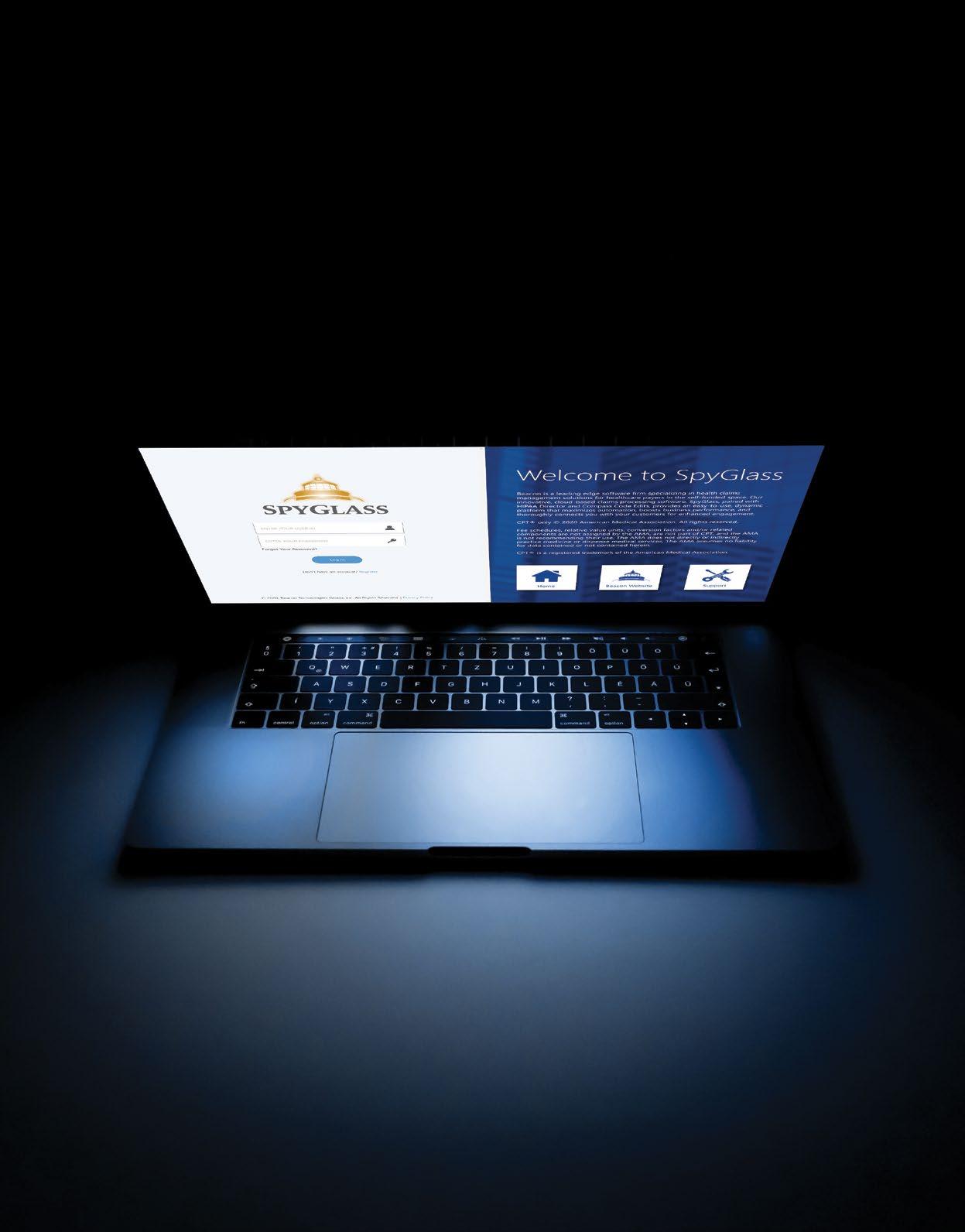
10 minute read
COVID CAPTIVITY
by SIPC
PANDEMIC SPOTLIGHTS ROLE OF CAPTIVE INSURANCE TO FILL TRADITIONAL COVERAGE GAPS, UNITE RISK MANAGEMENT AND BENEFITS MANAGEMENT
AAs far back as November 12, 2019, SIIA’s Captive Insurance Committee first mulled responses to what was then described as the Wuhan virus. “There really wasn’t a consensus to move forward and possibly include pandemic risk in some of our captives,” recalls John Capasso, president and CEO of Captive Planning Associates, LLC who chairs the committee. “I don’t think anybody really grasped the magnitude once it hit our shores.”
Advertisement
Written By Bruce Shutan
Fast forward about four months to when several state legislatures tried forcing insurance carriers to pay business-interruption claims related to novel coronavirus losses under currently in-force insurance policies. These efforts were pursued in spite of the fact that they don’t collect enough annual premiums to remain solvent, Capasso says.
It’s unlikely that pandemics are covered under most of these policies in the standard insurance marketplace, explains Harry Tipper, III, chief operating officer, insurance for CaptiveOne Advisors LLC. He says one exception would be if a company “already created a captive and considered that sort of thing as part of the insurance coverage that the captive would offer.”

As an example of the standard market, he says the Lloyd’s of London and London market insurers that offer contingency insurance (similar to the business-interruption line) “are reported to be slapping pandemic exclusions on every one of their renewals.” It’s not surprising considering that preliminary estimates from the U.S. Casualty Actuarial Society suggest the risk of retroactively adding losses from the current COVID-19 pandemic as a covered cause of loss “essentially bankrupts the U.S. insurance industry,” Tipper observes. John Capasso
His larger point is that based on how insurers have responded to the pandemic, America’s business owners “may have to find alternatives to their traditional roots to protect their business… This pandemic will undoubtedly make companies take a second look at captives, an option that heretofore they may not have given serious consideration.” Harry Tipper

While all types of businesses and industries worldwide have experienced serious disruption, the All-England Lawn Tennis Club must have had a prophecy. It paid for an insurance policy in each of the past 17 years to guard against losses in the unfortunate event that a pandemic would cancel the famed Wimbledon tournament. One report pegged the payment at $141 million, which would be nearly half the amount of expected losses.
Many pure captives cover business interruption, supply chain interruption and administrative actions, which in the case of COVID-19, involves governmental agencies issuing stay-at-home orders. “There’s nothing out there right now that covers any of this other than the liberalization of policies that we wrote with our clients” to do just that, Capasso explains. What’s needed is a federal backstop for COVID-19, which he argues is also “just too much for a captive to handle.” He’d like to see lawmakers include language that allows captives to participate in any such legislative solution. “Otherwise,” he warns, “captives will not be in a position to take anything other than a reimbursement type of policy to help businesses out.”
SIIA’s Captive Insurance Committee has discussed the possibility of a version of the Terrorism Risk Insurance Act of 2002 being crafted to deal with COVID-19, knowing the commercial market’s response to pandemic risk is akin to endorsements omitting terrorism after 9/11.
MEDICAL STOP-LOSS CAPTIVE RENEWALS
Capasso’s firm is seeing COVID-19’s impact on renewal rates for some of the medical stop-loss captives it runs. While there has been some tightening in the market, he’s still receiving competitive quotes, especially on a reference-based pricing (RBP) platform.
COVID-19 claims for medical stoploss captives are expected to be $25,000 to $50,000 on the low end and $500,000 to $750,000 or more on the high end involving someone on a ventilator in intesive care, reports Donald McCully, president of Medical Captive Underwriters.
“There’s not a whole lot we can do to mitigate the risk” other than write into the plan document ways for employers to control the frequency and cost of testing for future pandemics, he says. “If the
YOUR BEST PARTNER LEADS THE WAY

For more than 35 years, self-funded employers have trusted Sun Life to deliver fl exible stop-loss solutions and seamless claim reimbursement. And now, with our new Clinical 360 pro gram, our clinical experts will review your claims data to identify cost savings and care optimization. With high-cost medical and pharmacy claims growing every year, you need your best partner with you every step o f the wa y. Ask your Sun Life Stop-Loss specialist about our latest innovations.
STOP-LOSS | DISABILITY | ABSENCE | DENTAL/VISION | VOLUNTARY | LIFE
For current fi nancial ratings of underwriting companies by independent rating agencies, visit our corporate website at www.sunlife.com. For more information about Sun Life products, visit www.sunlife.com/us. Stop-Loss policies are underwritten by Sun Life Assurance Company of Canada (Wellesley Hills, MA) in all states except New York, under Policy Form Series 07-SL REV 7-12. In New York, Stop-Loss policies are underwritten by Sun Life and Health Insurance Company (U.S.) (Lansing, MI) under Policy Form Series 07-NYSL REV 7-12. Product offerings may not be available in all states and may vary depending on state laws and regulations. © 2019 Sun Life Assurance Company of Canada, Wellesley Hills, MA 02481. All rights reserved. Sun Life Financial and the globe symbol are registered trademarks of Sun Life Assurance Company of Canada. Visit us at www.sunlife.com/us. BRAD-6503k SLPC 29427 02/19 (exp. 02/21)
claim shows up, we follow the fortunes of the stop-loss carrier that we reinsure.”

Tipper notes that many captive managers have started to see some claims under various insurance coverages the captives that they manage write; for example, policies that involve employees or key partners who have fallen ill or died from COVID-19. Turning to the medical benefits insurance or self-insurance marketplace, he notes that the captive’s owner must determine the terms of pandemic disease coverage under its plan documents and if it matches up to the coverage or coverage restrictions that stop-loss carrier may have imposed. Don McCully
Even under a self-insured benefits plan, “you can have a captive which picks up what the stop-loss carrier doesn’t for such issues like experimentality of the treatment protocol,” he says. “It may not be able to do it for the full limits that the stop-loss carrier can do, but at least it can provide some financial relief.”

Turning to other captive forms such as a group captive also may fill coverage gaps provided that it does so in a manner that doesn’t render all of the other captive owners or members of the syndicate insolvent. Whereas a homogenous pool or group captive take on risks that are unique to particular industries, some captive managers and captive owners may prefer a heterogenous structure for better balancing of losses. Traditional thinking had been that the latter reduced risk by accepting risk from uncorrelated industries.
“Pandemic diseases break that whole scenario,” Tipper explains. “They are endemic to every aspect of American society and every industry. Whether you’re homogenous or heterogenous, an individual or group captive, your owner or owners are going to be affected by a pandemic disease.” In short: no one is immune.
For example, while some large self-insured employers moved many employees to part-time status or used other methods to reduce group benefit costs including those related to COVID-19, they will be less successful when workers’ comp liability may be unavoidable. Even gig economy business such as the Lyft and Uber ridesharing services, as well as essential services such as Uber Eats, Doordash and GrubHub, face the same challenge considering that the coronavirus likely will sideline a percentage of drivers, according to Tipper.
An unintended consequence of claims from COVID-19 may be tipping the scales in individual jurisdictions to deem these drivers to be employees, not independent contractors, as those states seek funding sources to help finance an explosion in the number of stricken individuals who need to be treated.
As the pandemic generates greater interest in captives, he believes COVID-19 claims may be the impetus that finally proves the captives’ worth to its critics. The next challenge will be captives’ passing muster with the IRS, which has continued its attacks on these alternative risk transfer arrangements even during the pandemic.
BREAKING SILOS
Single-parent captives can write a policy that blends group health insurance premiums into their existing property and casualty captive, according to McCully. Although limited in scope, he notes that it might be for medical malpractice for a hospital or another P&C line.
In fact, many of these organizations are in healthcare, which he says means “they’re going to have COVID-19 exposure for their employee population at a greater frequency” than others. The same would be true with a homogenous line of nursing homes that must shut down periodically if workers have been exposed and need to be quarantined or a restaurant chain whose sales have been significantly reduced by social distancing.
Whatever the risk might be, one major strategic advantage of a captive is that it allows employers a meaningful opportunity to break silos along the road to uniting risk management and benefits management.
A wellness initiative can be amortized over P&C and health insurance exposure for middle-market employers with 100 or 125 lives that self-insured through a captive because it’s going to impact both sides when implement, McCully explains. “You don’t have somebody on lost wages or out of the office sick with COVID-19 if you can manage that exposure and create that physical space that’s required for a safer work environment,” he adds.
One real-world example could involve using digital thermometers to monitor the body temperature of workers multiple times a day, which not only would be less strenuous than drug testing but also more effective in managing pandemic risk. “That in and of itself might be a leading indicator for keeping that person out of work for a few days, as they see whether it’s a flu or virus, or they’re just fine and maybe it’s only two or three days vs. 14 in quarantine,” he says.
Capasso predicts that BUCAH plans will likely raise their rates in a post-COVID-19 market, which would provide an advantage to group medical stop-loss captives, especially those that incorporate RBP or have some ability to use it in their plan design. “That’ll be a big help to midmarket companies,” he believes.
Ironically, he isn’t sure if carriers are worried about the cost of caring for patients who require emergency care or hospitalization so much as other issues. Several underwriters, for example, have expressed to him their deeper concern about a potential baby boom from about November to February. “One of the greatest risks is having a premature baby, and one preemie can cover 15 to 20 patients on a ventilator,” he notes.
COVID-19’s impact might be a double-edged sword. On the one hand, McCully says there could be significantly reduced frequency and severity of catastrophic claims if enough elective surgeries are being deferred and eliminate any costly complications that would balloon those expenses. But one or two serious COVID-19 claims could wipe out those gains, especially when there’s such widespread exposure to the pandemic.
But there also are opportunities to create a winning formula. “If I can avoid a few COVID cases, and my frequency and catastrophic is down, we’re going to have a very good underwriting year,” he says.
Bruce Shutan is a Portland, Oregon-based freelance writer who has closely covered the employee benefits industry for more than 30 years.
Claims Processing, Simplified.
See for yourself.







